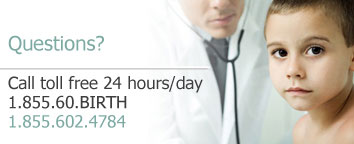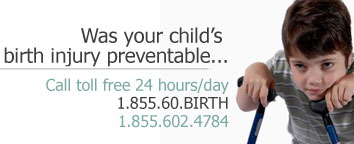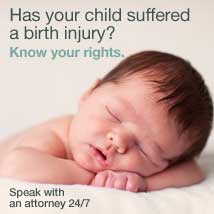Cerebral Palsy Causes and Consequences
 The term cerebral palsy is an umbrella term that covers several neurological disorders, all of which involve brain damage that impairs muscle strength, control, and coordination. The condition is all too common: approximately 10,000 of the babies born in the United States every year are born with or develop cerebral palsy, according to figures from the Centers for Disease Control and Prevention. Cerebral palsy sometimes develops after the baby is born, but more typically it is a congenital condition, meaning that the child is born with it.
The term cerebral palsy is an umbrella term that covers several neurological disorders, all of which involve brain damage that impairs muscle strength, control, and coordination. The condition is all too common: approximately 10,000 of the babies born in the United States every year are born with or develop cerebral palsy, according to figures from the Centers for Disease Control and Prevention. Cerebral palsy sometimes develops after the baby is born, but more typically it is a congenital condition, meaning that the child is born with it.
What causes cerebral palsy?
A number of factors can cause the brain damage that results in cerebral palsy, such as meningitis or other infection, premature birth, genetic diseases, or lack of oxygen during delivery. An estimated 10 to 15 percent of cases are caused by a brain injury.
Cerebral palsy can also result from negligence or malpractice in the delivery room. For example, if the unborn child is deprived of oxygen because of umbilical cord problems, a difficult labor, or other factors, but the obstetrician and nurses fail to notice signs of fetal distress and fail to take swift action to resolve the problem (such as a timely C-section), the baby may suffer brain damage and consequently cerebral palsy.
Other forms of medical malpractice or negligence that can result in cerebral palsy include:
- C-section mistakes, such as delaying or failing to perform an emergency C-section
- Asphyxia resulting from a failure to observe and react to low fetal heartrate or other signs of fetal distress
- Too much force applied during delivery
- Improper use of vacuum extraction or forceps
- Failure to diagnose meningitis or toxemia
Signs and treatment of cerebral palsy
Typically, parents and pediatricians first become aware of signs of cerebral palsy after the baby reaches six months of age and fails to meet normal developmental milestones. Common symptoms of cerebral palsy include:
- Poor muscle tone
- Impaired coordination
- Impaired vision or hearing
- Cognitive impairment
- Developmental delays
- Difficulty swallowing or feeding
- Seizures
- Respiratory problems
- Favoring one side of the body
- Lack of bowel or bladder control
The severity of cerebral palsy varies widely from case to case, ranging from mildly impaired coordination to quadriplegia (inability to control or move all four limbs), which requires round-the-clock care and confinement to a wheelchair.
Although cerebral palsy has no cure, its symptoms can sometimes be improved with physical rehabilitation, physical therapy, and/or special education. Equipment such as braces or wheelchairs may also be necessary. In some cases, surgery has proven beneficial.
Cerebral palsy litigation
If the child’s cerebral palsy was the result of medical negligence or malpractice, the family may be eligible to file a cerebral palsy lawsuit and obtain a settlement to help pay for the child’s ongoing medical expenses and care. The legal team at Balkin & Eisbrouch has more than four decades of experience in seeking justice and financial compensation to victims of malpractice and their families. We know what you’re going through, and we’re here to help. Call us today for a free consultation.
- Cerebral palsy. http://www.ncbi.nlm.nih.gov/pubmedhealth/PMH0001734/
- Cerebral Palsy Occurrence in the US. http://www.cdc.gov/features/dscerebralpalsy/index.html




 Resources
Resources
 Resources
Resources